What if the Killer Was an Ideology, Not a Person?
Like a whisper on the wind, they were gone
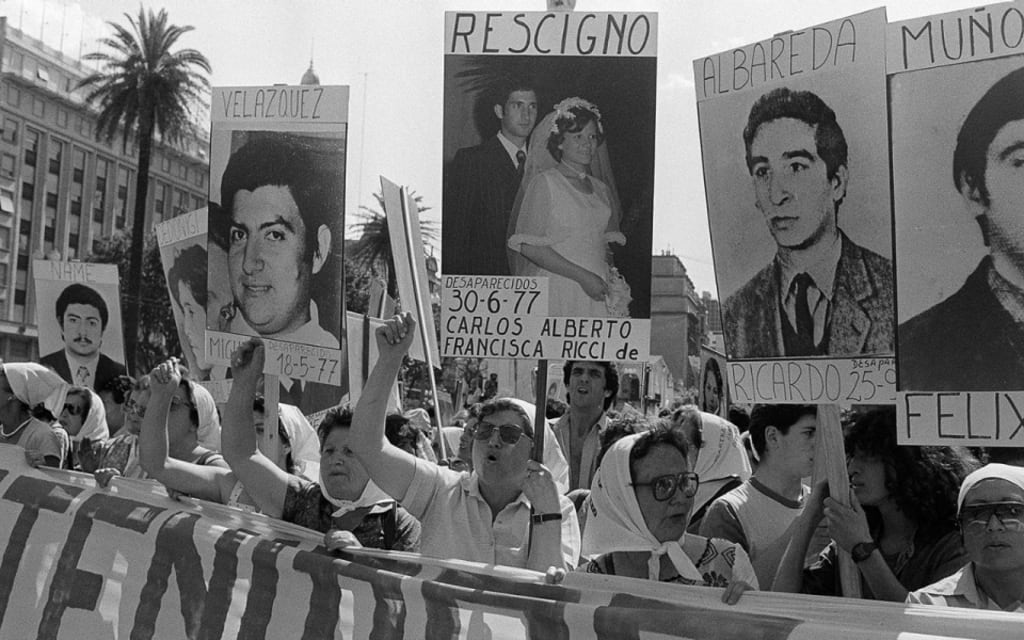
My anxiety-ridden mind is prone to chronic overthinking and scaling minor doubts into full-blown freakouts. Case in point, when I first moved to Ottawa for university, I was terrified. I had endured the 6-hour flight alone. It was my first time in Canada, and I had no family and no friends here, so there was no one to pick me up from the airport. Everything felt foreign, and my mind kept turning over a singular thought: what if I disappeared?
Seriously. What if, post-baggage claim, I exited the airport, entered a taxi that turned out not to be a taxi, got stolen away and was never heard from again? I mean, given that no one in Canada knew me, it was fair to assume that I wouldn't be missed. It then follows that no one would contact my parents to inform them that I was lost. They would never hear from me again, and it would be like every trace of my existence was scrubbed from planet Earth. Gone. Without a trace.
Seeing as I'm presently sitting here writing this, you can take comfort in the fact that I did not disappear. Those thoughts might've been my irrational brain taking the wheel, a thing of nightmares born out of fear, fatigue and the stress of learning to exist in a new, untraversed space. However, the threat of forced disappearances was a material reality that shaped the lives of Argentina's citizens during the heyday of its military dictatorship. Between 1976 and 1983, an estimated 30,000 people were systematically disappeared, snatched from their homes or jobs in the dead of night, never to be heard from again. Like a whisper on the wind, they were gone.
The onset of the dirty war
Following the death of Argentine president Juan Perón in 1974, his wife, then vice-president, Isabel Perón, assumed office and became the first female president in the world. Though, it's a bit touch and go about whether or not it counts as "the first" if you weren't technically democratically elected.
Her presidency would be a short and turbulent one, swiftly ended within two years at the hands of a strategic coup d'état on March 24th, 1976. This coup created a power vacuum, filled by the installation of a right-wing military government led by Jorge Rafael Videla, who remained in power until 1983.
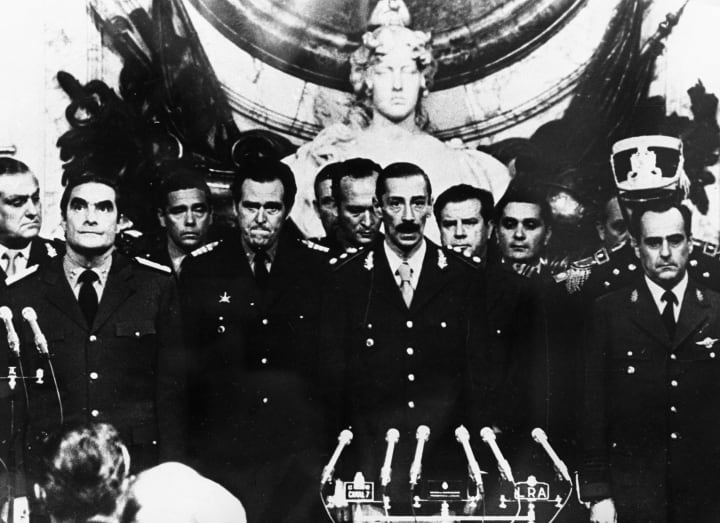
The military ruled Argentina with an iron fist, determined to snuff out any attempts at subversion and created an atmosphere of absolute terror. The result: the forceful disappearance of approximately 30,000 citizens and a legacy of collective trauma that many have labelled a genocide. This period of state-sanctioned terrorism is aptly called the "Dirty War," a label invented by those in power to paint these disappearances and other atrocities as a cleansing of unseemly elements of the nation.
The disappeared
The victims or Los Desaparecidos (as they've come to be known in Argentina) were of colourful backgrounds. The disappeared also varied immensely in terms of age and comprised of both young adults and older people. They included teachers, social workers, politicians, artists, poets, students, lawyers, writers, journalists, trade unionists and anyone else marked by the military regime as "subversive." Subversive is a weird word because it literally means 'different from the norm.' Those laying down the law were free to interpret that however they saw fit, which often resulted in innocent people being taken. It also generated a culture of fear in Argentina wherein citizens were constantly on high alert, self-regulating their behaviour to avoid the subversive label.
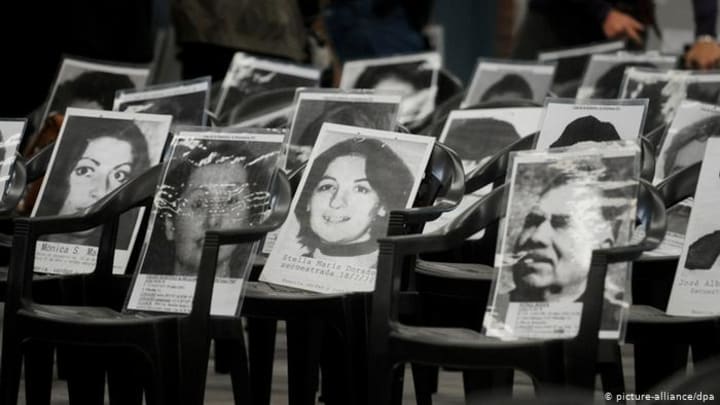
It is believed that the victims were kidnapped and taken to clandestine government facilities where they were relentlessly tortured before being killed either via a death squad or by unceremoniously dumping their bodies out of aircrafts flying over the Atlantic Ocean. This practice even expanded to include pregnant women who were permitted to carry their babies to term before being executed (how thoughtful?). The government then illegally rehomed the children to military families. Approximately 500 children endured this fate and still have no idea who their biological families are.
The killer ideology and the left-right war
An air of mystery pervades this practice of forced disappearances. Not only are the majority of bodies still unaccounted for, but it's also complicated to pinpoint where we should place blame. How do we definitively prove what happened with missing bodies and little biological evidence? And who do we charge for this injustice? The men who followed orders and facilitated the torture and murder of countless people? Or their superiors who ordered the purging of subversives? Do we blame the leaders of the military dictatorship? Or the administration in the United States at the time who were aware of the coup d'état and provided tactical training to the Argentine forces?
When we think of True Crime, we picture a deranged individual with a traumatic background that goes on a rampage, collecting innocent victims. There is blood and gore and mystery but equally, a pointed idea that the criminal was an anomaly rather than a reflection of the human condition. Here I ask the question: what if the killer was an ideology, not a person? Hear me out.
Forced disappearances in Argentina occurred under the context of the Cold War. The United States was actively fighting against the "perils" of communism and socialism and threw its weight behind a slew of right-wing extremist dictatorships not only in Argentina but also in Paraguay, Uruguay, Chile, Brazil and Bolivia. The CIA armed and trained these military dictatorships under a campaign known as Operation Condor, designed to neutralize far-left actors. So, in the name of freedom, let's eliminate everyone who disagrees with us?
Given the secretive nature of Operation Condor, the exact number of forced disappearances in Argentina is unclear, as well as the precise figure for missing children robbed of the chance to know their families. However, what is clear is that these actions exemplify extreme intolerance and the tendency for human beings to stew in their beliefs and regard any divergent opinions as untenable and dirty.
It is impossible to place the blame squarely on one person because it was not an exercise that could be executed by one person alone. Instead, it represented the snowball effect of an all-encompassing right-wing ideology taken too far. As is human nature. The truest of True Crimes are the ones that sit closest to the spirit and make you question everything you believe human beings are capable of.
The aftermath
Decades after the end of military rule, the victims' families are still trying to piece together what happened in an attempt to heal. The mothers and grandmothers of the disappeared formed an activist group in 1977 called Mothers of the Plaza de Mayo to advocate for the lives of their lost sons and daughters. They have held numerous marches, protests and vigils on behalf of the disappeared, lobbying the government to locate the bodies of their loved ones and reconnect rehomed children to their biological families.
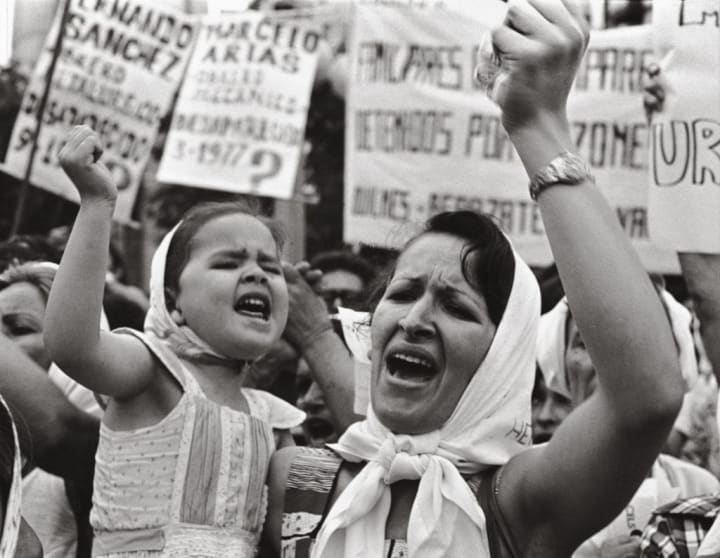
While the group's activism has resulted in the discovery of mass graves, the reunion of some lost children and the arrest of key military personnel, the majority of the disappeared have not been found. Thus, their loved ones are stuck in a perpetual state of trauma, distress and hope, remembering relatives who are neither alive nor confirmed dead. They are wracked with constant uncertainty. The legacy of forced disappearances left a stain on Argentina and continues to impact the lives of thousands of people across the nation. How do you even begin to heal when the facts about what happened to your loved ones remain shrouded in endless mystery? Where are the disappeared?
---------------------------------------------------
If you liked this post, please be sure to like this post! If you're able to leave a small tip, it'd be greatly appreciated and also, feel free to check out some of my latest stories. I recommend starting with this one:
About the Creator
Laquesha Bailey
22 years old literally, about 87 at heart. I write about self care, university life, money, music, books and whatever else that piques my interest.
@laqueshabailey


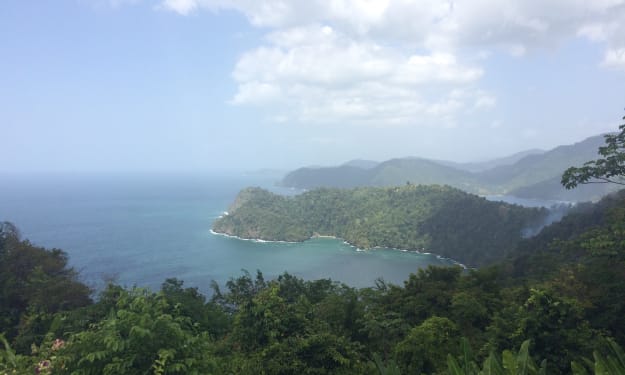
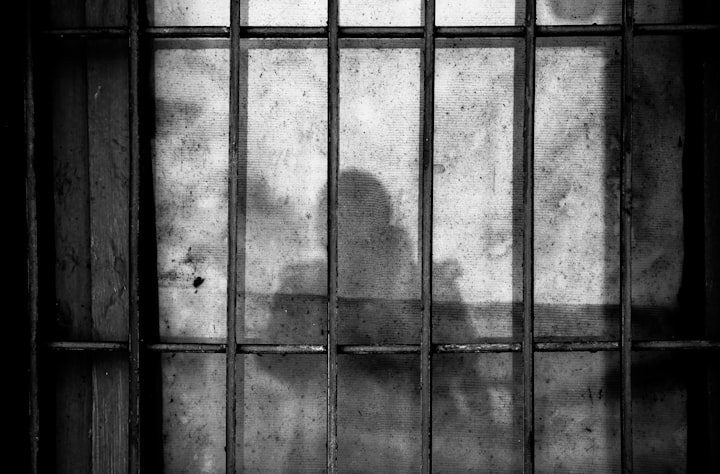


Comments
There are no comments for this story
Be the first to respond and start the conversation.